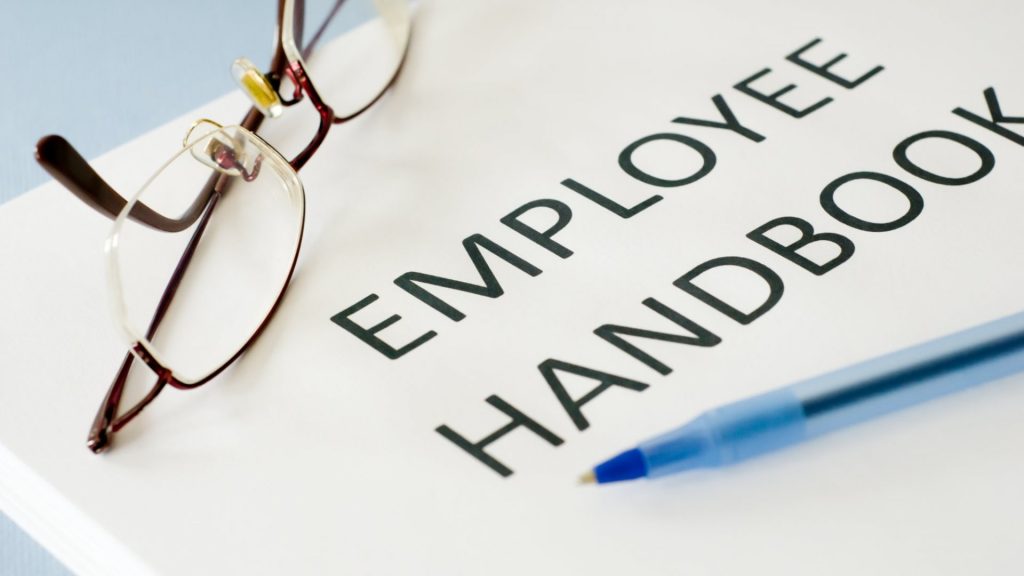
A handbook should be given to everyone who works for your business. In this paper, you can learn about, among other things, your company’s policies, perks, and overall business goals. The purpose of an employee handbook is to make sure that no one who works for you misunderstands the most important company policies and has access to information that is reliable, up-to-date, correct, and legal.
Why Is It Important to Give Employees a Guide?
Questions will be asked of everyone who gets a new job, especially if the questions come from an applicant tracking system. Even though orientation gives them a chance to ask questions, it’s important to have a guide with the most important rules and information about the organization’s goals and services. You can save time in the HR department by making sure everyone knows what to expect when they start a new job.
People can also use the manual to avoid future misunderstandings and legal problems. Putting all the information about benefits in one place gives your business a chance to promote the benefits it offers. It also gives managers a reliable source of information they can use when employees have questions.
When to Use an Employee Handbook
Every business with employees should give them a handbook. If you said “yes” to any of the following questions, it’s time to make one or maybe update the one you already have:
- Will we soon start hiring people?
- Will our business grow to the point where we need to hire more people?
- Are we creating brand-new departments or practices, or are we offering important new benefits?
- Is our present manual still relevant?
- Do we worry about how we will defend ourselves in court?
- Do our managers often ask HR the same questions that could be answered with a standard set of informational guidelines?
How to Make a Manual for Employees
A good way to make sure everything is the same is to write your employee handbook in the same language as your websites and other materials that employees see. The handbook should be fun to read and full of information that is useful. It should also be clear where the company stands on the most important issues. Employees should know what is expected of them and what their boss expects of them after reading the handbook.
How to Put Together a Guide for Employees
In the beginning, it should be clear what the main goal of the handbook is. You could include the goals of your business and quotes from top managers or the owner. Think about how these bigger ideas relate to the goal of the handbook. To get the best results, think about the following:
Talk to the people in the human resources department, in leadership positions, and among employees who live up to your business’s values.
Write short paragraphs that don’t take up more than a page.
Test the content on your staff to make sure that your audience understands what you are saying.
Don’t use jargon. Cliches and buzzwords in business don’t work as well as clear, precise language.
One of the most important parts of making a great employee handbook is writing an introduction that sets the tone for the whole thing.
What Should Be in an Employee Guide?
If you want your employees to read and understand the whole manual, make it interesting as well as correct and complete. Address the letter to the employee and use a tone that is friendly but still professional. Also, explain why the rules are the way they are when you can. This will help you get your employees’ support and make them more likely to read the whole document.
At the very least, your employee handbook should have the following sections:
- A quick rundown of what’s going on
- How employees can take advantage of opportunities to learn and grow
- Information will be given about non-cash benefits and pay for employees, such as sick leave and paid time off (PTO) policies.
- Information about how to leave a company, why an employee might be fired, and what to expect when they do.
- How your company hires people, and what is its policy on equal employment opportunities?
- How your company rates how well employees do their jobs?
Why the Employee Handbook Should be Updated
Since businesses and policies are always changing, it makes sense that your handbook will also change over time. You can add a note to your current handbook if you only need to change one page or one policy. But if your guidebook is already out of date in a big way, it’s better to make a new one.
Make sure your employee handbook has a disclaimer that says it’s their job to know about changes and to keep memos close by. Include information on how people can ask questions about policy changes.
Changes to the employee handbook aren’t the only way to let people know about big changes. Emails, company memos, and posters can also be used to let people know. If you don’t need to print a new copy, you might switch to an online-only digital version that employees can access at any time through the company intranet or an employee portal.
Final Thoughts
In short, a handbook for employees is a useful tool for any business, but it is especially helpful for small businesses. You are in charge of everything as the owner of a small business, from marketing and sales to running the business and dealing with employees. A handbook for employees can help you keep track of them by making it clear what you want from them and how they should act. It can also explain policies and procedures and make it easy for you and your employees to communicate.
A handbook for employees is a good way to find new workers. You can get the best and brightest people to work for your business by putting information about the company culture, benefits, and job requirements in a handbook. And you can make it less likely that you’ll have to deal with discipline problems in the future by setting clear rules and expectations for behavior.
Comeet’s innovative software can help you hire people, grow your business, and hire more people with less trouble and more organization. It’s a way to make sure that all of your employees know about any changes. You can find out more about us at www.comeet.com.





